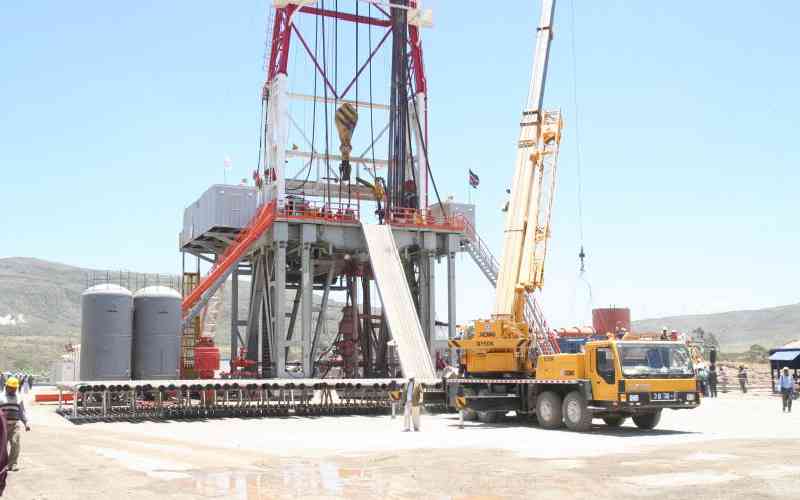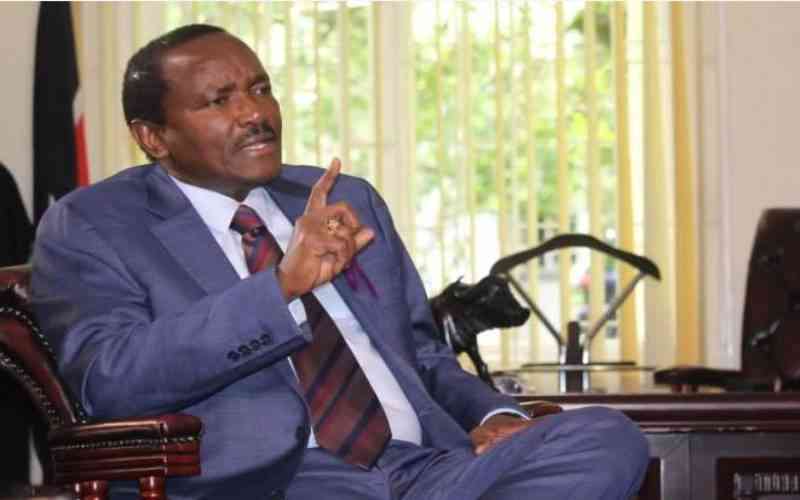
The Ministry of Energy and Petroleum got the biggest budgetary cut in the current financial year. This casts doubt on the possibility of further pushing down the cost of energy as well as increasing the number of Kenyans connected to the national electricity grid in the course of this fiscal year.
The State Department of Energy has seen its approved budget halved to Sh60.25 billion, down from Sh117 billion that had earlier been approved. The cut is a massive Sh57 billion.
The State Department for Petroleum, which is gearing up to start producing crude oil on a pilot basis, has seen its budget reduce by Sh1.2 billion, to Sh3.04 billion, from Sh4.29 billion allocated earlier.
While its budget has been reduced, salaries for employees in the Department for Petroleum went up substantially to Sh67.8 million, from Sh3 million. This is expected to enable the department to up capacity in the human resource division.
Among the projects affected by the cuts especially under the Department for Energy include geothermal wells being developed mostly by the Geothermal Development Company. The State owned firm has been developing geothermal wells in the Bogiria Silali.
According to Treasury’s mini-budget, allocation for geothermal development will go down to Sh10.5 billion from Sh21.9 billion. This has had the effect of scaling down to 25MW the amount of electricity that will be produced by the wells in the area in the course of this financial year from an earlier estimate of 50 megawatts. The number of new wells that were to be drilled in the area have been reduced to five from 10.
The Kenya Electricity Transmission Company (Ketraco) has also had its budget to build different transmission lines substantially reduced. According to the Supplementary Budget, work on major transmission lines, some of which were expected to be completed in the course of 2016/17 financial year, has been scaled down following the budget cuts.
Rural electrification
The budget for transmission and distribution has been cut to Sh47.76 billion, from an earlier approved amount of Sh93.45 billion. This might slow down bringing on board electricity generated from cheaper sources such as wind.
Also down is the number of public facilities that will be connected to the grid during the financial year under the rural electrification programme, whose budget has been slashed to Sh13 billion from Sh25 billion.
Initially, the Government had targeted to connect over 1,200 schools but this has been cut to 600. Further, the ministry now targets at getting 544 market centres hooked to power included a downward revision from 544. The number of health centres that were expected to be connected to electricity has been revised to 118 from 418.
However, the number of people expected to be connected to the electricity grid in the course of the financial year through the connectivity subsidy went up 100 per cent to 2,000,000 households, from an earlier estimate of 1,000,000.
Despite the cuts, allocation for nuclear power development went up by Sh50 million to Sh384 million from Sh334 million. Kenya is currently preparing to build a nuclear power plant and the Nuclear Electricity Board has been undertaking capacity building for Government officials as well as a public awareness campaign.
The Board expects to start building the plant in 2021 at a cost of Sh500 billion and is set to be completed by 2027. While its allocation went up, the number of officials that will be trained in the course of this financial year reduced to 10, from an initial target of 120.
Stay informed. Subscribe to our newsletter
 The Standard Group Plc is a
multi-media organization with investments in media platforms spanning newspaper
print operations, television, radio broadcasting, digital and online services. The
Standard Group is recognized as a leading multi-media house in Kenya with a key
influence in matters of national and international interest.
The Standard Group Plc is a
multi-media organization with investments in media platforms spanning newspaper
print operations, television, radio broadcasting, digital and online services. The
Standard Group is recognized as a leading multi-media house in Kenya with a key
influence in matters of national and international interest.
 The Standard Group Plc is a
multi-media organization with investments in media platforms spanning newspaper
print operations, television, radio broadcasting, digital and online services. The
Standard Group is recognized as a leading multi-media house in Kenya with a key
influence in matters of national and international interest.
The Standard Group Plc is a
multi-media organization with investments in media platforms spanning newspaper
print operations, television, radio broadcasting, digital and online services. The
Standard Group is recognized as a leading multi-media house in Kenya with a key
influence in matters of national and international interest.









